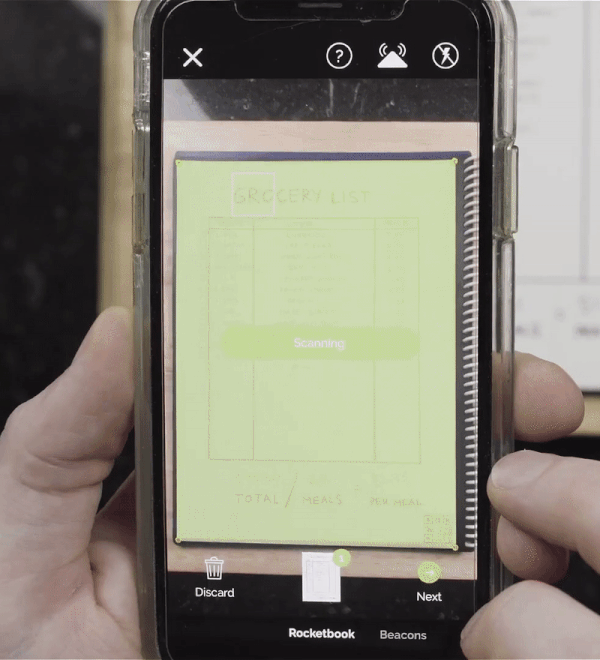A personal kitchen, right in your notebook.
Time travel hasn’t been invented yet, but there is a way to communicate with your future self. Sort of. Maintaining a healthy eating diet benefits the future version of yourself in the same ways that habit tracking or fitness tracking do. A meal planner packs all those benefits into a single notebook to start making future you healthier, today!
You can use any old notebook for a meal planner, but this guide will also provide specific hacks for using the reusability of a Rocketbook notebook to send your eating habits into the stratosphere (that’s a good thing).In the video below, you’ll learn:
- What is Meal Planning
- How to Plan Your Meals
- Benefits of Meal Planning
What is Meal Planning
1. Scheduling Your Meals
Meal Planning starts with the valuable practice of scheduling your weekly meals to build self-awareness of what you are eating.2. Organizing Your Recipes
It also involves organizing your recipes for easy reference when you are cooking a meal. Even one recipe in your arsenal can give you the confidence to cook at home more.3. Keeping A Shopping List
Lastly, it includes keeping a shopping list that helps keep track of what ingredients you need to pick up and how much your spending on your groceries.We’ve provided some meal planning templates below, but choose any page design that works for you. You don’t need to be Pablo Picasso to create an effective meal planner. But you don’t have to make the tracker intentionally ugly, either.

How To Plan Your Meals
1. Create Your Meal Calendar
The first step is to actually create your weekly meal calendar to plan out what you’ll be eating for the week ahead. Check out the tips below for getting the most out of this page.Pro-Tip: Include a space to schedule snacks throughout your day. No amount of snacks is too many…but 15 snacks is probably too many. Rocketbook Tip: Create the template in permanent ink. Then fill in the calendar with your Pilot FriXion pen. Finally, erase the page for a clean slate of planetary planning.

2. Create Your Recipe Page
Without recipes, you won’t have any meals. And without any meals, you’ll go hungry. So in a way, this is the most important step to the meal planning process. This pages serves as a repository of all your recipes for easy reference when it’s time to cook up some grub or for step three.Pro-Tip: Track each meal’s calories for an added emphasis on your fitness goals. Or don’t. We’re not the boss of you.
Rocketbook Tip: Scan your recipes with the Rocketbook App to build your very own digital cookbook (and to clear up space in your meal planner).

3. Create Your Shopping List
Try making a chicken sandwich without chicken. It’s almost impossible. That’s where a shopping list comes in. Use your recipe page as a guide for filling out the shopping list. That way you know exactly what you need to pick up at the grocery store.Pro-Tip: Track your spending for each food item you buy to start monitoring not only improve your eating habits, but your budgeting skills too.
Rocketbook Tip: Use Smart Lists in the Rocketbook App to instantly convert your shopping list to a digital grocery list on your phone.

Benefits of Meal Planning
1. Less Stress, More Time
When you’re hungry at 6pm with no food in the house, it isn’t just stressful — it’s horrifying. There’s no better way to alleviate that horror than creating a weekly meal plan. Plus, you won’t spend so much time researching recipes or making emergency trips to the grocery store five nights a week.2. Healthier Eating
By monitoring your eating habits, you’re more likely to hit your eating habit goals. So if you’re goal is to eat healthier, congrats, you’re well on your way! If you’re goal is to eat unhealthier, also congrats!3. Better Spending Habits
Keeping track of how much you spend on food makes it easier to create a budget, which is the number one best way to start saving money. It also will allow you to keep track of sale cycles at your local grocery store.




1 comment
The meal planning idea is genius.